It's Time to Get Inspired by These Sustainable Solutions
We asked professionals around the world to share the sustainable solutions that excite them. Here are their answers
Houzz AU
7 January 2021
Environmental challenges can sometimes feel insurmountable, but sustainable development doesn’t stand still. While we still have a long way to go, there have been a lot of environmentally friendly developments in architecture, design and construction.
“In my opinion, sustainability is less about one or two ‘amazing’ products or services, rather a collection of small-scale interventions that when put together can have a significant impact,” says Angus Eitel of UK firm Fiftypointeight Architecture + Interiors. Best of all, these kinds of interventions are often more than just research in the lab, but offer real ways to incorporate sustainability into your next project.
We asked Houzz professionals around the world to tell us about some of the sustainable solutions they find exciting.
“In my opinion, sustainability is less about one or two ‘amazing’ products or services, rather a collection of small-scale interventions that when put together can have a significant impact,” says Angus Eitel of UK firm Fiftypointeight Architecture + Interiors. Best of all, these kinds of interventions are often more than just research in the lab, but offer real ways to incorporate sustainability into your next project.
We asked Houzz professionals around the world to tell us about some of the sustainable solutions they find exciting.
The terrace in this Italian home by Michele Perlini faces south to minimise energy loss from the extensive glazing.
Passive design and achitectural context
Both Eitel and Australian architect Rebecca Naughtin stress the importance of paying attention to the orientation and context of a build to leverage passive heating and cooling. For Eitel, this amounts to “the opportunity for free energy savings”.
“The increased understanding of the nuances of site orientation and existing conditions is an exciting development that is leading to buildings that perform well and respect their context and local vernacular,” says Naughtin. “An understanding of wind directions can also increase the effect of cross ventilation for passive cooling and reduce additional energy consumption.”
Passive design and achitectural context
Both Eitel and Australian architect Rebecca Naughtin stress the importance of paying attention to the orientation and context of a build to leverage passive heating and cooling. For Eitel, this amounts to “the opportunity for free energy savings”.
“The increased understanding of the nuances of site orientation and existing conditions is an exciting development that is leading to buildings that perform well and respect their context and local vernacular,” says Naughtin. “An understanding of wind directions can also increase the effect of cross ventilation for passive cooling and reduce additional energy consumption.”
Built on passive principles, this home by Sola Architecture Design in Japan is a certified low-carbon house.
Mariko Eto of Japanese firm Sola Architecture Design agrees. “Performance [in accordance with Passive House standards] can greatly reduce energy consumption and CO2 emissions in buildings, which are said to make up 30 percent of the total [global energy-related emissions].”
Eitel also highlights another significant aspect of passive architecture: its fabric-first approach to the building envelope, which focuses on a high level of insulation and airtight construction.
Best of all, these techniques are accessible to homeowners. Naughtin notes that they’re best incorporated at the start of a project.
Find architects near you on Houzz
Mariko Eto of Japanese firm Sola Architecture Design agrees. “Performance [in accordance with Passive House standards] can greatly reduce energy consumption and CO2 emissions in buildings, which are said to make up 30 percent of the total [global energy-related emissions].”
Eitel also highlights another significant aspect of passive architecture: its fabric-first approach to the building envelope, which focuses on a high level of insulation and airtight construction.
Best of all, these techniques are accessible to homeowners. Naughtin notes that they’re best incorporated at the start of a project.
Find architects near you on Houzz
This German home by Thomas Dauber presents a new model of living for the elderly. It includes a heat pump and thermally insulated wood.
Insulation and thermal efficiency
This goes hand-in-hand with a number of innovations in thermal efficiency and insulation. “In terms of materials, there are continuing, steady improvements in insulation (better insulation at reduced thickness), thermal efficiency in windows (triple glazing now being widely used) and so on,” says Eitel. “We have recently been learning about ‘aerogel insulation’, which is an ultra-high performance insulation suitable for walls, floors, roofs and is ideal for retrofits and refurbishment where thickness is critical and only very thin insulation can be used.”
Is this available to homeowners? “Achieving high levels of insulation and airtightness is reasonably straightforward on new builds and extensions, but less so on refurbishment projects,” says Eitel.
Italian architect Maria Elisa Villa talks about “nanotechnologies, [which create] new truly sustainable and effective products, for example thermal plasters a few centimeters thick”. While these products are already on the market, Villa notes that they may not be well-known, even among professionals.
On the other hand, German Architect Thomas Dauber highlights how more traditional materials can be used the same way. He notes that wood-frame buildings require thinner walls than stone builds for insulation, and notes that cellulose or natural wool insulation can keep a wood-framed building warm even at depths of only 20 centimetres.
Insulation and thermal efficiency
This goes hand-in-hand with a number of innovations in thermal efficiency and insulation. “In terms of materials, there are continuing, steady improvements in insulation (better insulation at reduced thickness), thermal efficiency in windows (triple glazing now being widely used) and so on,” says Eitel. “We have recently been learning about ‘aerogel insulation’, which is an ultra-high performance insulation suitable for walls, floors, roofs and is ideal for retrofits and refurbishment where thickness is critical and only very thin insulation can be used.”
Is this available to homeowners? “Achieving high levels of insulation and airtightness is reasonably straightforward on new builds and extensions, but less so on refurbishment projects,” says Eitel.
Italian architect Maria Elisa Villa talks about “nanotechnologies, [which create] new truly sustainable and effective products, for example thermal plasters a few centimeters thick”. While these products are already on the market, Villa notes that they may not be well-known, even among professionals.
On the other hand, German Architect Thomas Dauber highlights how more traditional materials can be used the same way. He notes that wood-frame buildings require thinner walls than stone builds for insulation, and notes that cellulose or natural wool insulation can keep a wood-framed building warm even at depths of only 20 centimetres.
This hybrid wood-and-concrete construction by German firm HI Architektur features a brine heat pump with a hot-water cylinder. The electricity comes from photovoltaic panels on the roof.
Heating
Heating and climatic comfort are of course some of the biggest challenges to passive design, so it’s no wonder that several of the professionals we interviewed highlighted innovations in this area.
Eto notes solar thermal hot-water boilers or pellet stoves.
Japan-based Daisuke Sanada of Suwa Architects + Engineers focuses on the theory of exergy, which analyses how less efficient energy sources (like heat from the sun) can be used to sustainably heat homes. “The results can be used to optimise roof and window design, planting choices, and heating and cooling systems to create buildings with minimal environmental impact,” he says.
Radiant heating is especially relevant now. “In a thermal environment using radiant heat, it is not the air, but also the surface temperature of the walls and floors in the room that is important. In the wake of the corona crisis, the importance of ventilation is gaining attention, and the thermal environment using radiant heat from exergy design will become very important,” he says.
Heating
Heating and climatic comfort are of course some of the biggest challenges to passive design, so it’s no wonder that several of the professionals we interviewed highlighted innovations in this area.
Eto notes solar thermal hot-water boilers or pellet stoves.
Japan-based Daisuke Sanada of Suwa Architects + Engineers focuses on the theory of exergy, which analyses how less efficient energy sources (like heat from the sun) can be used to sustainably heat homes. “The results can be used to optimise roof and window design, planting choices, and heating and cooling systems to create buildings with minimal environmental impact,” he says.
Radiant heating is especially relevant now. “In a thermal environment using radiant heat, it is not the air, but also the surface temperature of the walls and floors in the room that is important. In the wake of the corona crisis, the importance of ventilation is gaining attention, and the thermal environment using radiant heat from exergy design will become very important,” he says.
Illustration of a ground-source heat pump from Harvest Cornwall.
Eitel also agrees that ventilation is a big issue particularly with COVID-19. “We are increasingly installing ventilation systems such as MVHR [mechanical ventilation with heat pump], which exchanges the heat from the extracted stale air with the fresh air coming in, ensuring an optimum temperature through the property and clean air,” he says.
These do have their drawbacks, however. “Air-source heat pumps are now the ‘go to’ in terms of energy creation (for heating and hot water) for residential use. However, whilst more expensive, ground-source heat pumps do offer an alternative without the concerns of noise and visual intrusion.”
Italian architect Michele Perlini points to an emerging new technology. “I would talk about the new hydrogen heaters that warm up domestic environments thanks to a catalytic reaction, without a flame and without CO2 emissions. This takes place at a temperature of about 300°C and does not form harmful nitrogen oxides (NOx); the only waste product of the reaction is water vapor, with no emissions of carbon dioxide or polluting waste, and this can be safely released into the atmosphere.”
Eitel also agrees that ventilation is a big issue particularly with COVID-19. “We are increasingly installing ventilation systems such as MVHR [mechanical ventilation with heat pump], which exchanges the heat from the extracted stale air with the fresh air coming in, ensuring an optimum temperature through the property and clean air,” he says.
These do have their drawbacks, however. “Air-source heat pumps are now the ‘go to’ in terms of energy creation (for heating and hot water) for residential use. However, whilst more expensive, ground-source heat pumps do offer an alternative without the concerns of noise and visual intrusion.”
Italian architect Michele Perlini points to an emerging new technology. “I would talk about the new hydrogen heaters that warm up domestic environments thanks to a catalytic reaction, without a flame and without CO2 emissions. This takes place at a temperature of about 300°C and does not form harmful nitrogen oxides (NOx); the only waste product of the reaction is water vapor, with no emissions of carbon dioxide or polluting waste, and this can be safely released into the atmosphere.”
This Victorian house from Ecospheric in the UK was completely retrofitted to comply with Passivhaus standards and also includes photovoltaics and a heat-recovery system (MVHR).
Energy storage
Several of the professionals we spoke to highlighted energy storage as a major roadblock to sustainable energy management. “Electricity storage has been described as the holy grail of the renewables industry. It is very difficult and expensive to store electricity … Storage can be achieved with the installation of batteries. The Tesla Powerwall has been available for a while, but other solutions are now available and the price is coming down,” says Eitel. Eto sees this as one of the keys to expanding domestic electricity generation.
Eitel notes that heating technologies, like the ground-source heat pumps he mentioned above, face similar challenges. “There is plenty of surplus heat on summer days, but the peak demand for heating comes on winter nights.” One exciting solution is Seasonal Thermal Energy Storage, which uses Interseasonal Heat Transfer. “The key element [is] the ‘Thermal Bank’. A Thermal Bank is used to store warm temperatures over a very large volume of earth for a period of months, as distinct from a standard heat store, which can hold a high temperature for a short time in an insulated tank.”
Of course, when talking about energy storage, the batteries themselves pose environmental challenges. “Both in their manufacture (using lithium for example), but also their disposal,” says Eitel. “Whilst not yet readily available, the use of phase change materials for energy storage is being developed, which will reduce the reliance on batteries.”
Energy storage
Several of the professionals we spoke to highlighted energy storage as a major roadblock to sustainable energy management. “Electricity storage has been described as the holy grail of the renewables industry. It is very difficult and expensive to store electricity … Storage can be achieved with the installation of batteries. The Tesla Powerwall has been available for a while, but other solutions are now available and the price is coming down,” says Eitel. Eto sees this as one of the keys to expanding domestic electricity generation.
Eitel notes that heating technologies, like the ground-source heat pumps he mentioned above, face similar challenges. “There is plenty of surplus heat on summer days, but the peak demand for heating comes on winter nights.” One exciting solution is Seasonal Thermal Energy Storage, which uses Interseasonal Heat Transfer. “The key element [is] the ‘Thermal Bank’. A Thermal Bank is used to store warm temperatures over a very large volume of earth for a period of months, as distinct from a standard heat store, which can hold a high temperature for a short time in an insulated tank.”
Of course, when talking about energy storage, the batteries themselves pose environmental challenges. “Both in their manufacture (using lithium for example), but also their disposal,” says Eitel. “Whilst not yet readily available, the use of phase change materials for energy storage is being developed, which will reduce the reliance on batteries.”
Comprised of 270 one ton concrete blocks, Sawmill House, in Victoria, Australia, by design studio Archier, explores the possibility of leveraging the thousands of tonnes of concrete that goes to waste each year.
Recycling, repurposing and cradle to cradle
Recycling has always been part of the conversation, and professionals point us to exciting developments.
On a small scale, French architect Tina Merkes points to the increased availability of furniture made of recycled construction features, such as joinery or upcycled windows.
On a larger scale, several architects highlighted developments in lifecycle thinking when it comes to home construction as a whole – the so-called cradle to cradle approach. “There is a growing ‘movement’ supporting the need to recycle, reuse, repurpose existing buildings rather than to demolish and rebuild. The latter is often favourable with the VAT [value added tax] benefits [in the UK]. In my opinion zero percent VAT should be applied to existing buildings, not new builds,” says Eitel.
Australian architect Naughtin says that “developments in building life-cycle analysis and material ‘passport’ technology is the next exciting step for a circular material economy”.
German architect Jürgen Lehmeier from Büro Für Bauform notes that sometimes what’s necessary is a different approach to the materials we already have. “Sustainable building also means keeping materials cycling. The CO2 balance of steel is always seen negatively, because only the manufacturing process is examined. What’s missed in this approach is that steel can be used over and over again and is absolutely sustainable from this point of view.”
Browse more beautiful and contemporary Australian-designed homes
Recycling, repurposing and cradle to cradle
Recycling has always been part of the conversation, and professionals point us to exciting developments.
On a small scale, French architect Tina Merkes points to the increased availability of furniture made of recycled construction features, such as joinery or upcycled windows.
On a larger scale, several architects highlighted developments in lifecycle thinking when it comes to home construction as a whole – the so-called cradle to cradle approach. “There is a growing ‘movement’ supporting the need to recycle, reuse, repurpose existing buildings rather than to demolish and rebuild. The latter is often favourable with the VAT [value added tax] benefits [in the UK]. In my opinion zero percent VAT should be applied to existing buildings, not new builds,” says Eitel.
Australian architect Naughtin says that “developments in building life-cycle analysis and material ‘passport’ technology is the next exciting step for a circular material economy”.
German architect Jürgen Lehmeier from Büro Für Bauform notes that sometimes what’s necessary is a different approach to the materials we already have. “Sustainable building also means keeping materials cycling. The CO2 balance of steel is always seen negatively, because only the manufacturing process is examined. What’s missed in this approach is that steel can be used over and over again and is absolutely sustainable from this point of view.”
Browse more beautiful and contemporary Australian-designed homes
This Italian farmhouse, restored by Ora Architetti, uses local wood and stone and includes solar panels and wood-fibre insulation. Stone from sections the team tore down was reused in the build, and the home includes traditional architectural features.
Natural materials and traditional techniques
In fact, many of the professionals we spoke to recommended a look back at existing or modified natural materials and traditional techniques. “Natural materials are healthy, wholesome, they insulate in an excellent way from both heat and cold and above all they let our homes, which are our third skin, breathe,” says Italian architect Roberta Tredici of Archingreen.
She points out that in this way, both new projects and updates to existing builds can be sustainable. “There are natural paints that use products such as eggs, milk, linseed oil, terracotta, and then pigments of vegetable origin such as charcoal, walnut husk, also plasters, flooring and finishes in general that can reduce what is called indoor pollution and heal a living environment with minimal intervention.”
Natural materials and traditional techniques
In fact, many of the professionals we spoke to recommended a look back at existing or modified natural materials and traditional techniques. “Natural materials are healthy, wholesome, they insulate in an excellent way from both heat and cold and above all they let our homes, which are our third skin, breathe,” says Italian architect Roberta Tredici of Archingreen.
She points out that in this way, both new projects and updates to existing builds can be sustainable. “There are natural paints that use products such as eggs, milk, linseed oil, terracotta, and then pigments of vegetable origin such as charcoal, walnut husk, also plasters, flooring and finishes in general that can reduce what is called indoor pollution and heal a living environment with minimal intervention.”
This design from France-based Tina Merkes uses healthy materials.
Villa agrees. “For me, wood, wood fiber, cork, lime and clay, and resin paints are always innovative,” she says. Italian architect Fulvio Claudio Melle of Melle-Metzen Architects likewise advocates the strong reduction of the use of chemicals in building materials, in favour of, “for example, insulating materials based on vegetable fibres, wool, mineral-based dyes or deriving from casein, low-emissive glues”.
Dauber is a proponent of wood construction, though concrete or stone builds are more common in Germany. He notes that wood is a renewable resource, acts as a heat sink and can be recycled relatively easily.
When it comes to traditional natural materials and techniques, however, Villa notes that the challenge here is rather in finding craftspeople who are still capable of working with natural materials, as there is a preference for quick and easy industrial replacements. She notes that these skills are often maintained in fine art conservation, rather than construction, and it is therefore the labour costs, rather than the materials themselves, that make these approaches expensive, at least in Italy.
Villa agrees. “For me, wood, wood fiber, cork, lime and clay, and resin paints are always innovative,” she says. Italian architect Fulvio Claudio Melle of Melle-Metzen Architects likewise advocates the strong reduction of the use of chemicals in building materials, in favour of, “for example, insulating materials based on vegetable fibres, wool, mineral-based dyes or deriving from casein, low-emissive glues”.
Dauber is a proponent of wood construction, though concrete or stone builds are more common in Germany. He notes that wood is a renewable resource, acts as a heat sink and can be recycled relatively easily.
When it comes to traditional natural materials and techniques, however, Villa notes that the challenge here is rather in finding craftspeople who are still capable of working with natural materials, as there is a preference for quick and easy industrial replacements. She notes that these skills are often maintained in fine art conservation, rather than construction, and it is therefore the labour costs, rather than the materials themselves, that make these approaches expensive, at least in Italy.
This home by Spanish architect Marià Castelló was built with natural materials and passive techniques despite its limited budget.
Accessibility
Of course, the best innovations in the world are useless if no one can access them. “For us, sustainability has always been not only environmental, but also economic. This is why we believe in green buildings that are not excessively expensive but which, thanks to knowledgeable and competent suppliers, can be within everyone’s reach,” says Tredici.
French interior designer Mayssa El Fakir of French interior design firm Ouvrage agrees. “At my level, as an interior designer, what I think has changed the most in the past few years in terms of sustainable development is access to vintage furniture. For years, it was reserved to people who had the time, who knew how to bargain hunt and who got up early on Sunday mornings to go to flea markets. But today, platforms have developed that make vintage goods accessible.
“Healthy (VOC-free) materials are another thing that has developed a lot over the last few years,” says Fakir. “Before, this was only available in luxury paints and today, more and more accessible brands are launching them. The market is ready and is growing a lot.”
Your turn
Which of these sustainable solutions have you harnessed in your home design? Tell us in the Comments below, like this story, save the images, and join the conversation.
More
Curious what else has featured on the international design radar? Read our Global Fair Roundup: Digging Into the 5 Biggest Trends of 2020
Accessibility
Of course, the best innovations in the world are useless if no one can access them. “For us, sustainability has always been not only environmental, but also economic. This is why we believe in green buildings that are not excessively expensive but which, thanks to knowledgeable and competent suppliers, can be within everyone’s reach,” says Tredici.
French interior designer Mayssa El Fakir of French interior design firm Ouvrage agrees. “At my level, as an interior designer, what I think has changed the most in the past few years in terms of sustainable development is access to vintage furniture. For years, it was reserved to people who had the time, who knew how to bargain hunt and who got up early on Sunday mornings to go to flea markets. But today, platforms have developed that make vintage goods accessible.
“Healthy (VOC-free) materials are another thing that has developed a lot over the last few years,” says Fakir. “Before, this was only available in luxury paints and today, more and more accessible brands are launching them. The market is ready and is growing a lot.”
Your turn
Which of these sustainable solutions have you harnessed in your home design? Tell us in the Comments below, like this story, save the images, and join the conversation.
More
Curious what else has featured on the international design radar? Read our Global Fair Roundup: Digging Into the 5 Biggest Trends of 2020
Related Stories
Eco Living
7 Everyday Steps to an Environmentally Friendly Home
By Kate Shaw
Keen to reduce your household's environmental footprint in a few easy steps? Here's how
Full Story
Lifestyle
Could You Live Like a Minimalist?
Houzz explores what minimalism really means, and visits three homes that have embraced it in sleek (and rustic) ways
Full Story
For Pros
8 Steps to Becoming a Truly Sustainable Interior Designer
What key things can you do to reduce the carbon footprint of your projects and business, long-term? Find out here
Full Story
Eco Living
Sustainable Design 2023: What's New and Where's it Heading Next?
Sustainability is fast becoming the strongest design direction of 2023 – here are the green products you need to know
Full Story
Houzz Around The World
Madrid Garden Tour: A Villa's Huge Biodiverse, Sustainable Garden
This garden used to be all lawn until a landscape designer transformed it into a haven with interest everywhere you look
Full Story
Most Popular
10 Ways Good Design Can Keep Your House Cool in Summer
Get your home's design right and you can say goodbye to expensive air conditioning bills – here's how
Full Story
Sustainable Homes
7 Clever Cooling Tactics: Shutters, Blinds & Shades to Talk About
External window treatments come in many forms. We've got you covered with the main types that keep homes naturally cool
Full Story
Most Popular
12 Ways to Get Your Home Cyclone-Ready
If you live in a part of the country where cyclones occur and want to protect your home, here are 12 steps to take
Full Story
Most Popular
War on Waste: How to Keep Your Fridge Food Fresh
These 9 refrigerator rules will keep more of your food fresh and tasty – and out of the compost bin
Full Story
Most Popular
10 Ways to Protect Your Home From Bushfires
If you live in a bushfire-prone area, it's crucial to protect your home and be prepared. Here are 10 key steps to take
Full Story



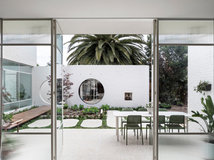

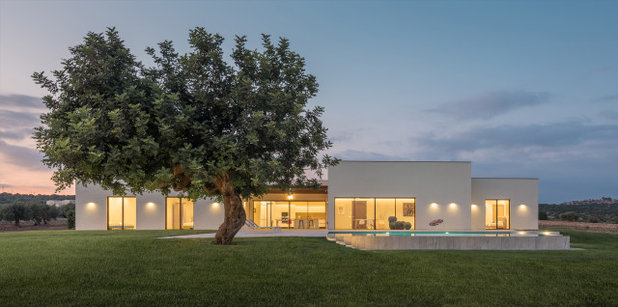
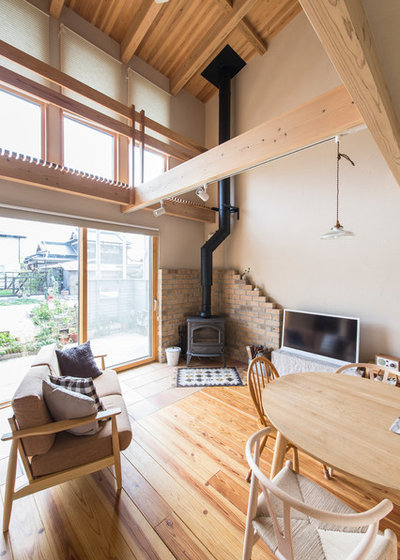
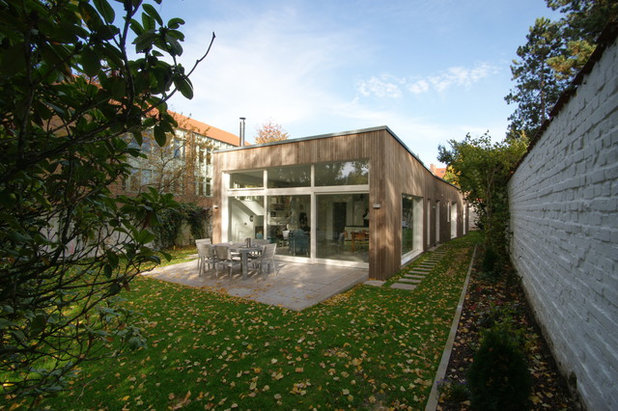
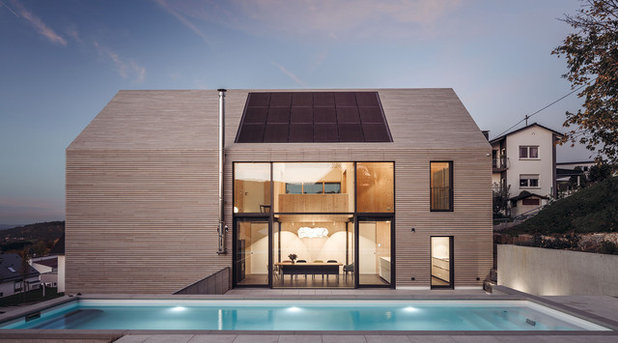
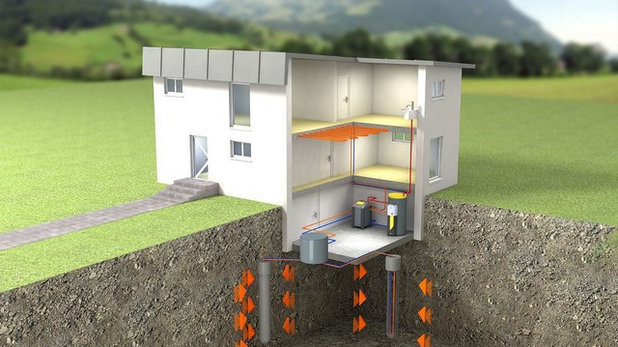
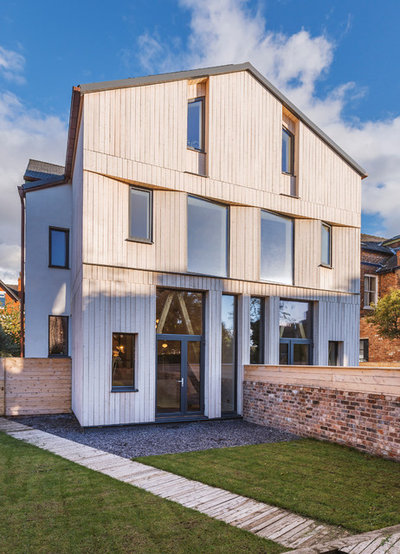
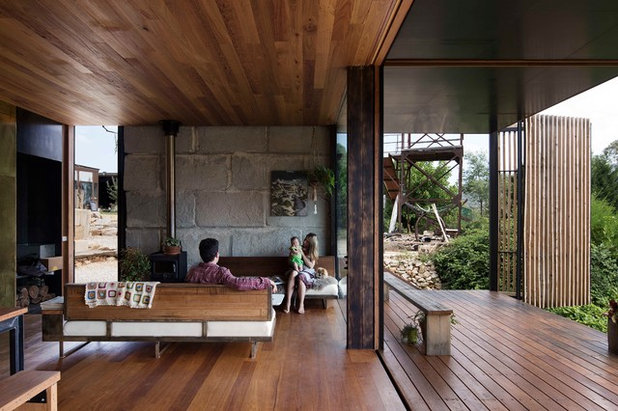
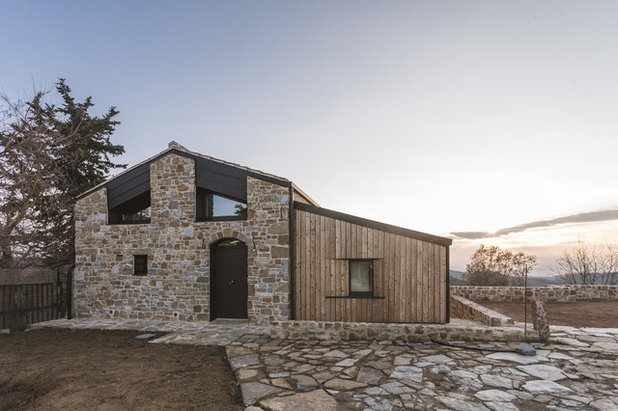
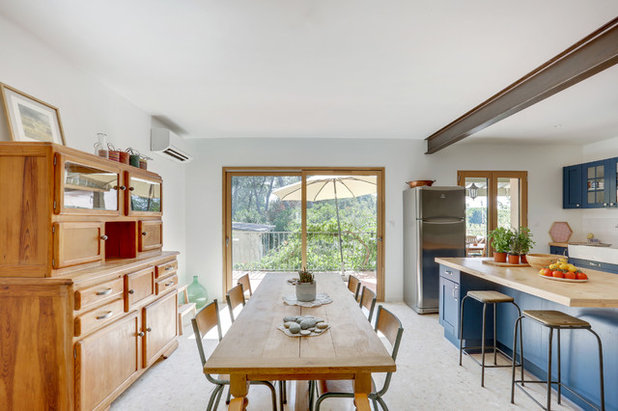
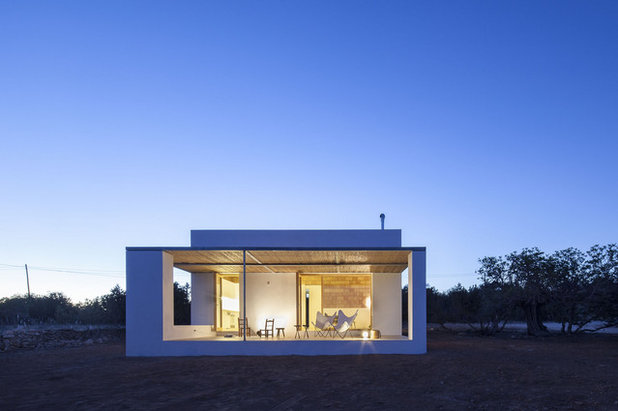


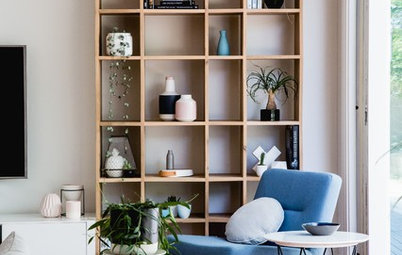
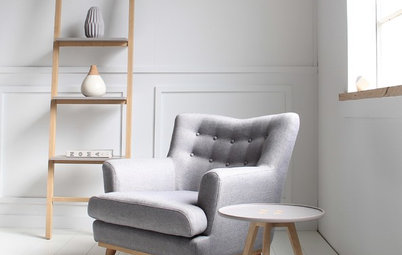
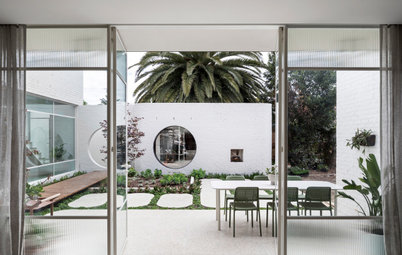
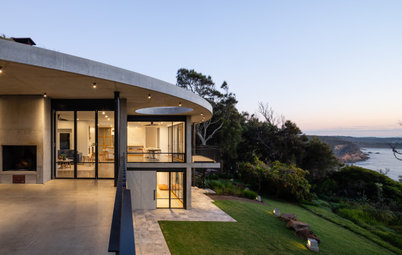
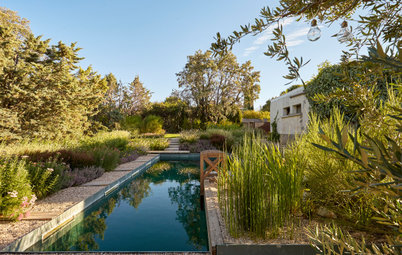
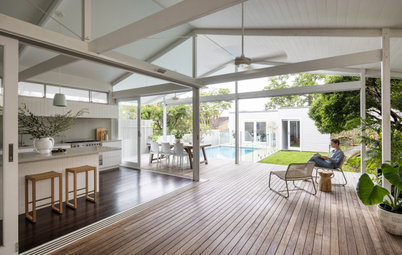
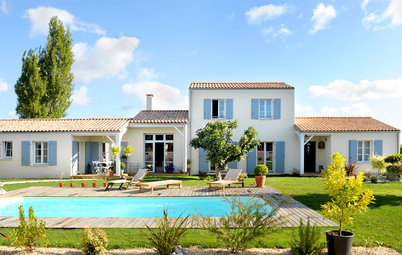
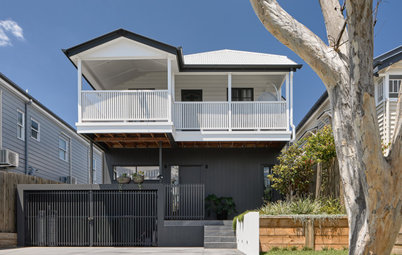
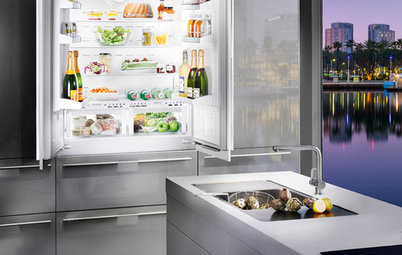
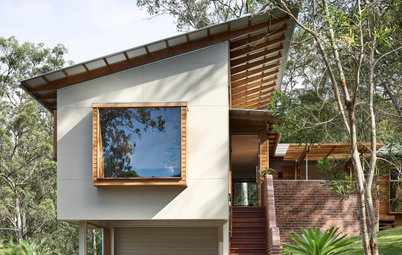
mcgri0, I know what you mean! Here in Iowa building in some places is so fast and so competitive, unfortunately the end product is shameful! Our son is a home energy performance consultant/technician. He is called upon to look at and "fix" relatively new homes! As long as the general public remains uneducated about thee most expensive investment of their lives, contractors will continue to rip off the new home buyer/builder! :-(
❤️❤️❤️🤓
Greta to see this article! I’m interested to hear more about home heating especially. Also, for storage and Evs, Batteries are increasingly recyclable and long lasting. With all the misinformation that naysayers sling around, this up to date article could be more specific.